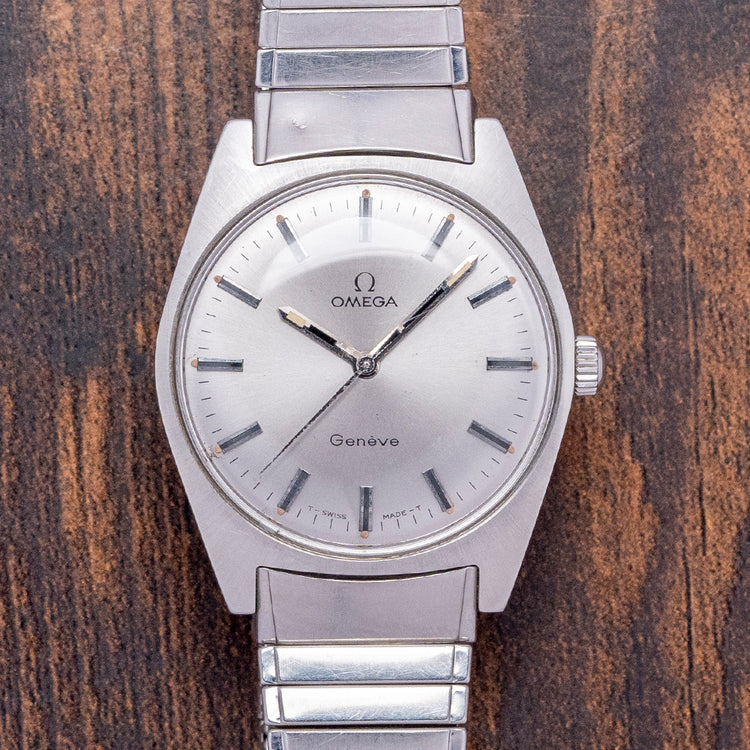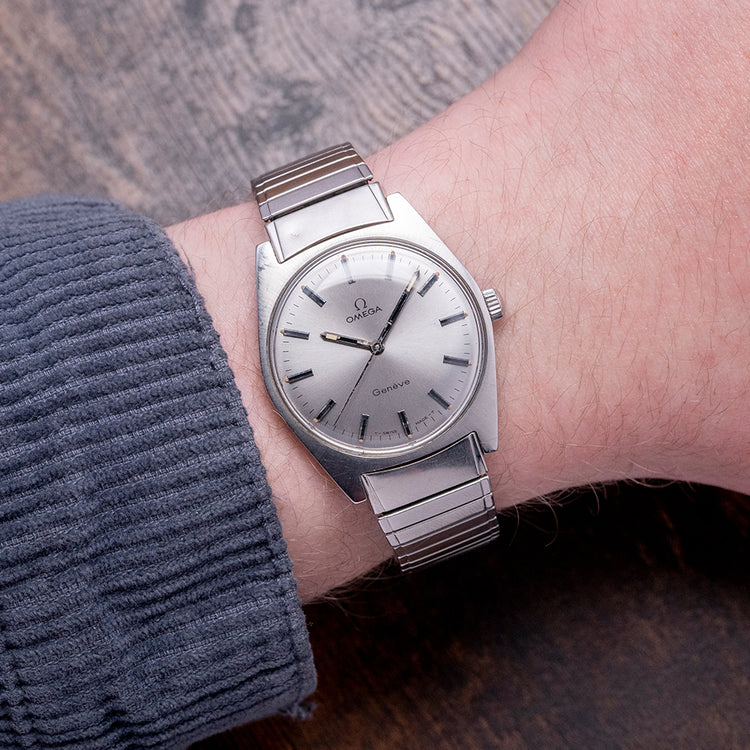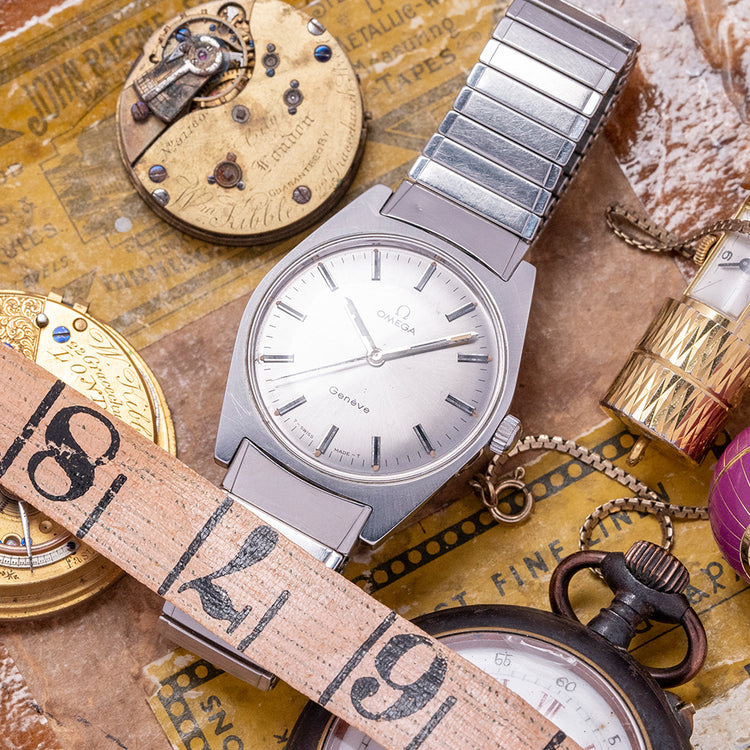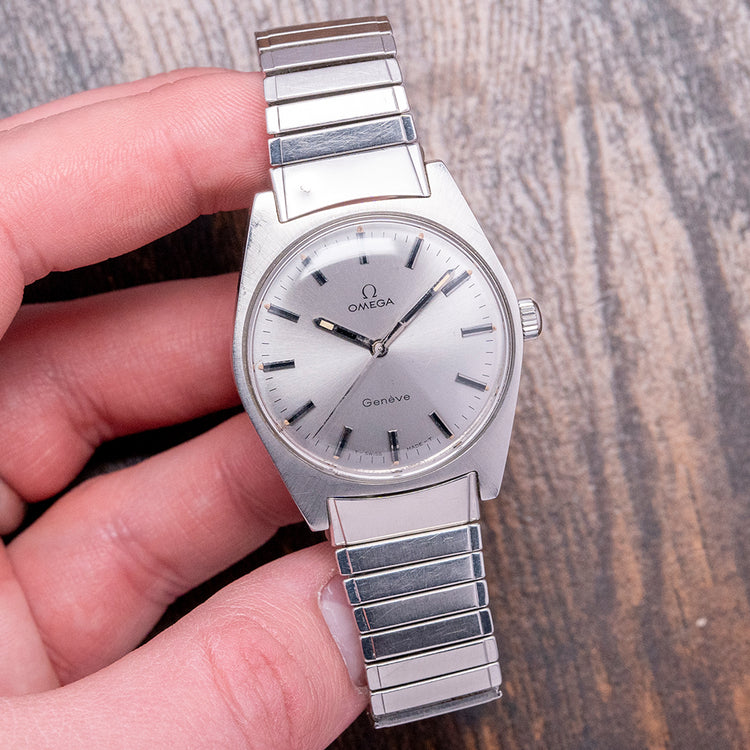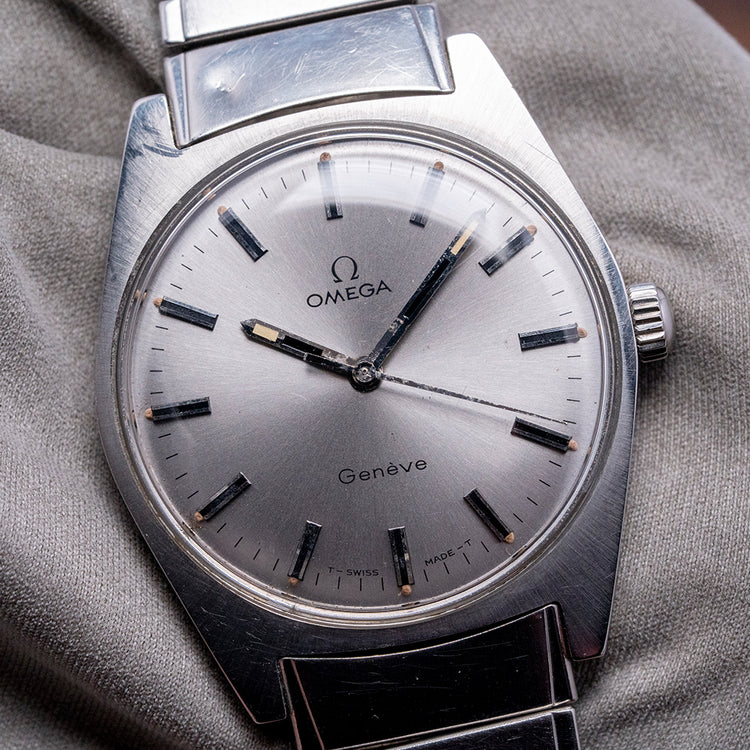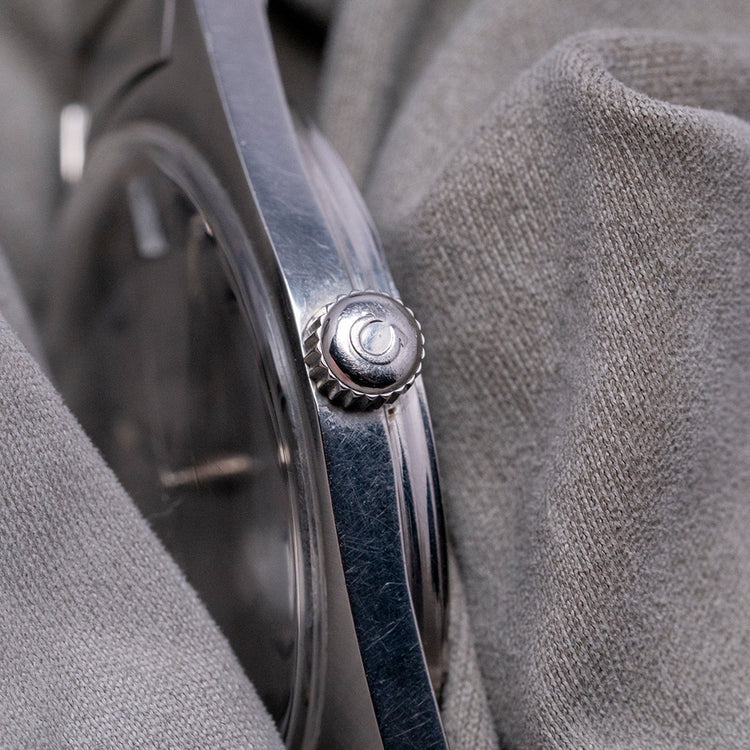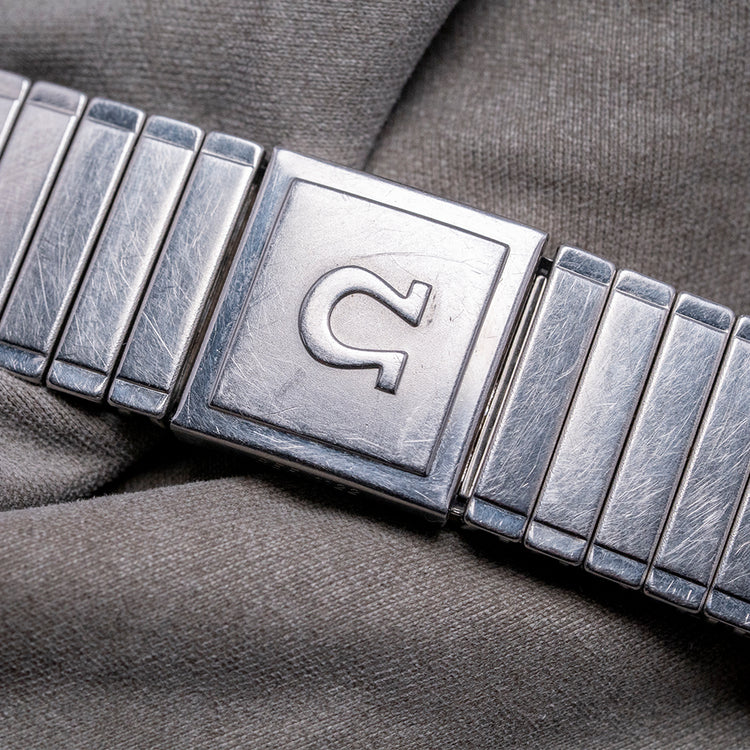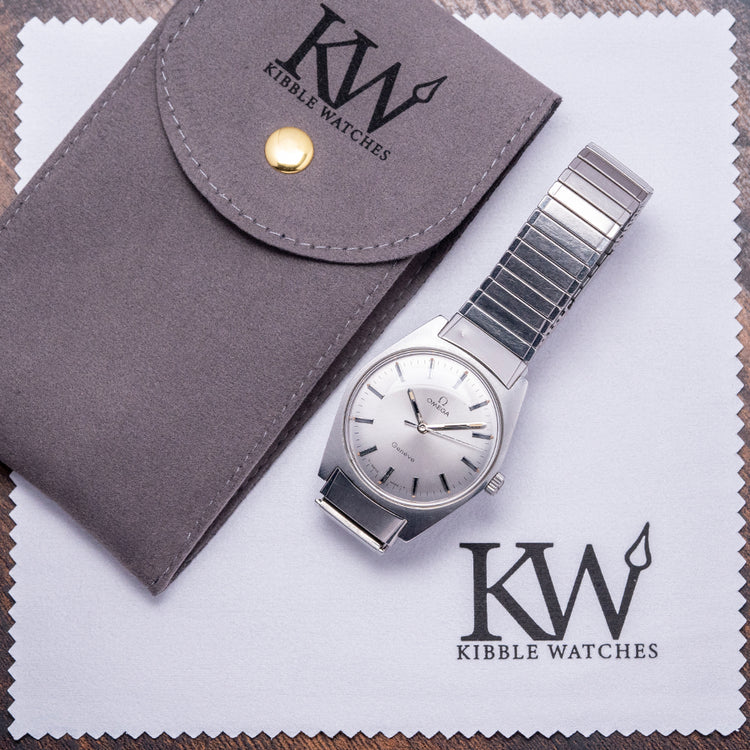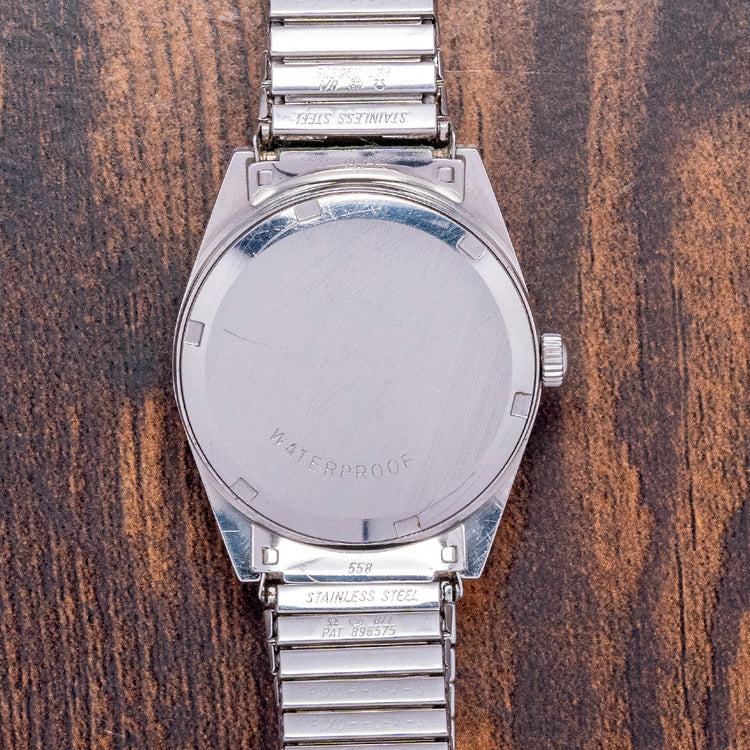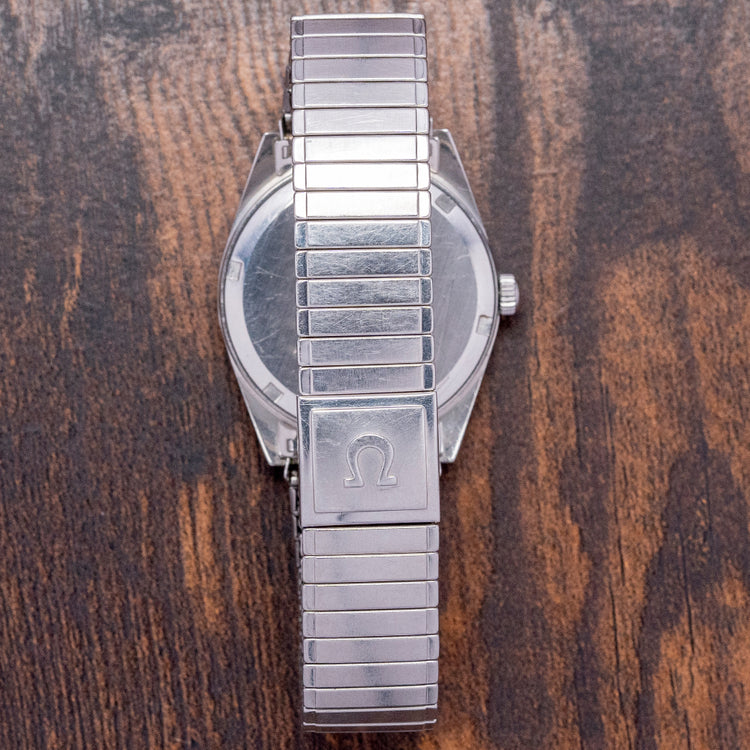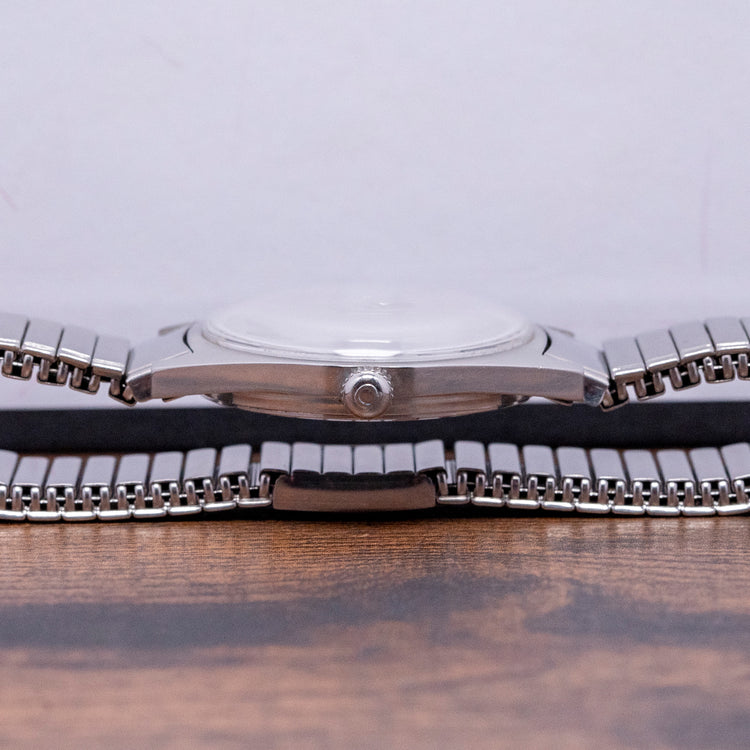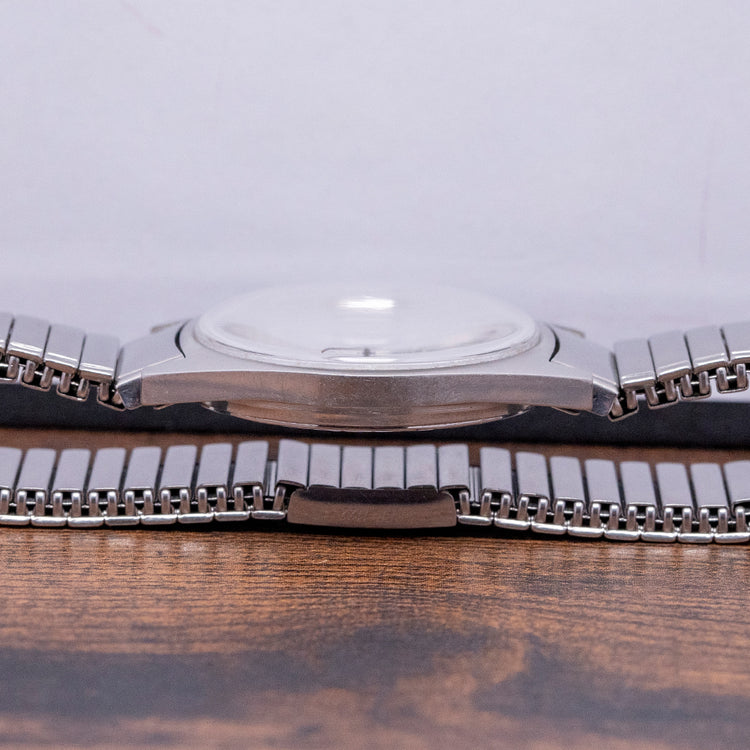More Information
Description
More
Less
Here we have a 1970 Omega Geneve Manual on a rare Omega Fixo Bracelet 135.041 with a 34.5mm tonneau stainless steel case. The case flows over your wrist with a lug-to-lug length of 40.5mm and a case thickness of 9.5mm, ensuring a comfortable fit on your wrist. On the right side is a signed coin-edged crown. A domed crystal sits above a sunburst silver dial. Applied steel baton indexes with black painted centres mark the hours. Slender sword hands have luminance tips complemented by a tapered second hand. At 12 o’clock, we have an Omega motif, and at 6 o’clock, “Geneve” completes this attractive timepiece. On the reverse, a screw-down case back. Inside a manually wound Omega Cal. 601, 17 jewels, 19,800 beats per hour. It comes paired with a rare uncut 19mm Omega Fixoflex sprung bracelet, ref:1122, which will fit up to a 7.4-inch wrist.
Points of Mention
More
Less
Personal Note
More
Less
Specification
More
Less
Movement : Manually Wound Omega Cal. 601
Age : Circa. 1970s
Year : 1970
Case Size : 37mm
Case Thickness : 12mm
Lug to Lug : 43mm
Lugs : 19mm
Condition : Pre-Owned
Box and Papers : None
Case Material : Stainless Steel
Warranty : 12 Months NON-Waterproof Warranty
The wrist model's wrist size is 7inch
About Omega
More
Less
Description
Here we have a 1970 Omega Geneve Manual on a rare Omega Fixo Bracelet 135.041 with a 34.5mm tonneau stainless steel case. The case flows over your wrist with a lug-to-lug length of 40.5mm and a case thickness of 9.5mm, ensuring a comfortable fit on your wrist. On the right side is a signed coin-edged crown. A domed crystal sits above a sunburst silver dial. Applied steel baton indexes with black painted centres mark the hours. Slender sword hands have luminance tips complemented by a tapered second hand. At 12 o’clock, we have an Omega motif, and at 6 o’clock, “Geneve” completes this attractive timepiece. On the reverse, a screw-down case back. Inside a manually wound Omega Cal. 601, 17 jewels, 19,800 beats per hour. It comes paired with a rare uncut 19mm Omega Fixoflex sprung bracelet, ref:1122, which will fit up to a 7.4-inch wrist.
Points of Mention
Personal Note
Specification
The Brand
Enquire or Book an Appointment
Would you like to discover further details about this watch, or perhaps arrange an appointment to view and try it on? Complete this form and a member of our team will get back to you shortly.
You May Also Like


























